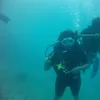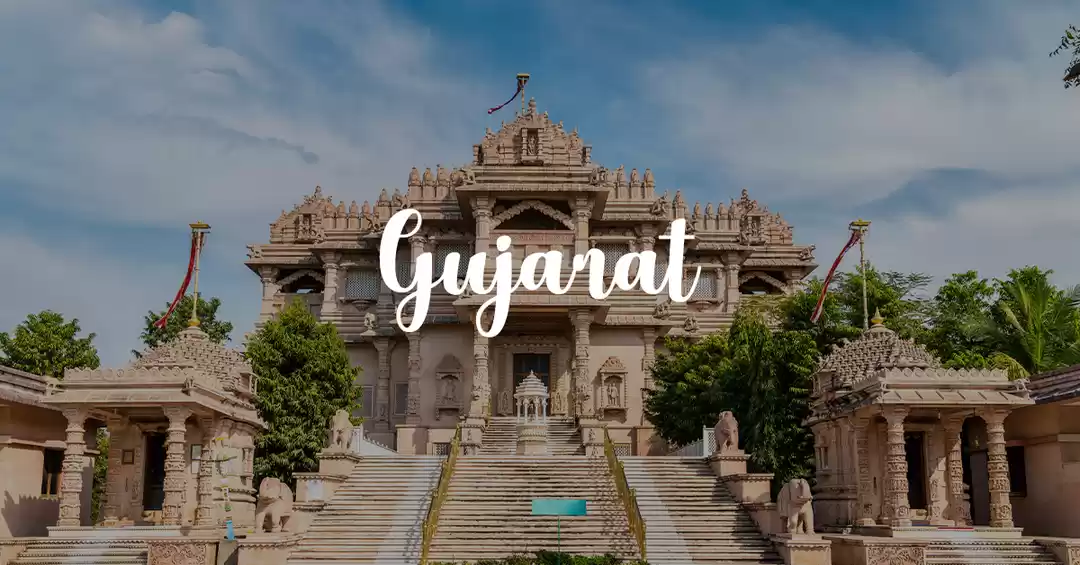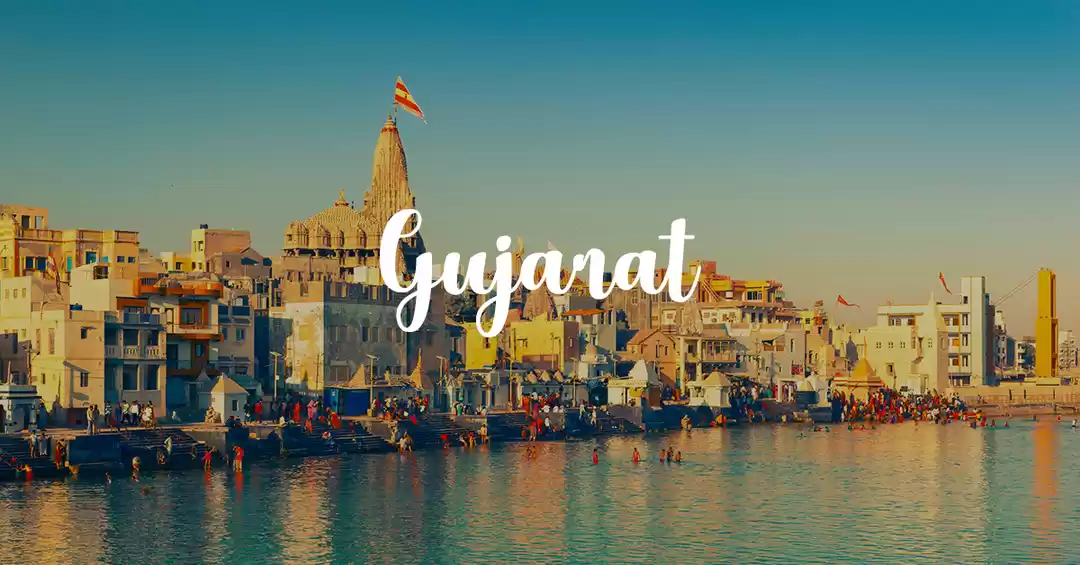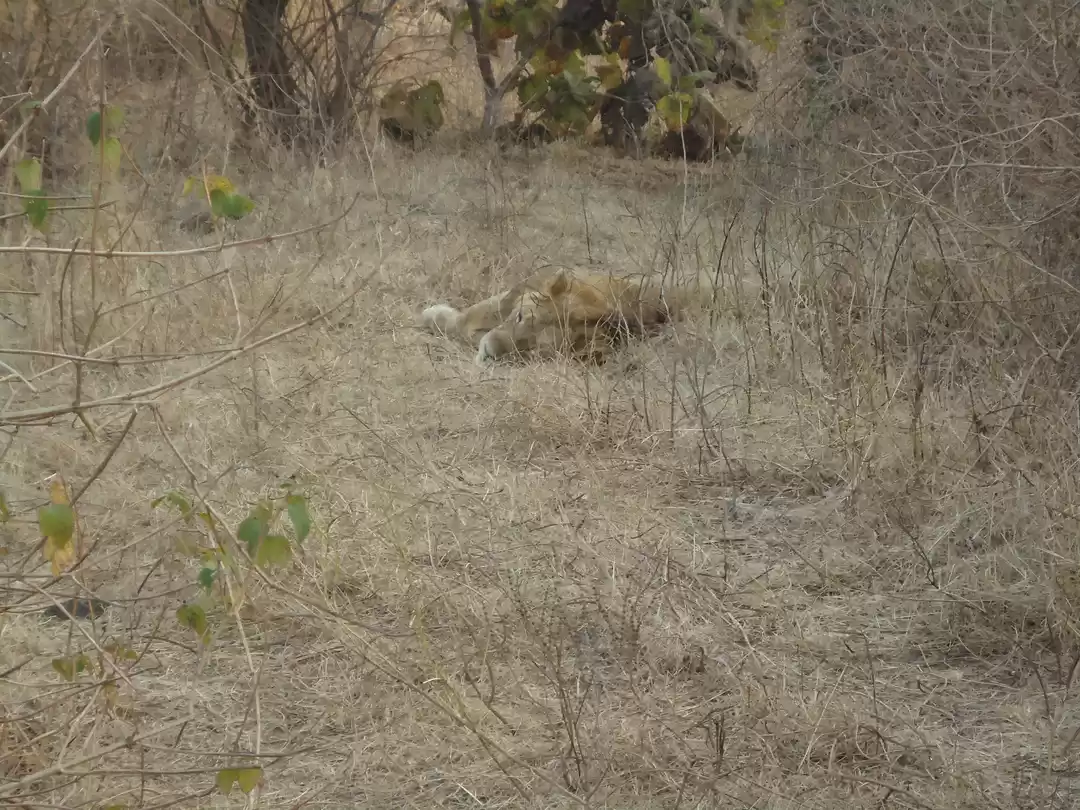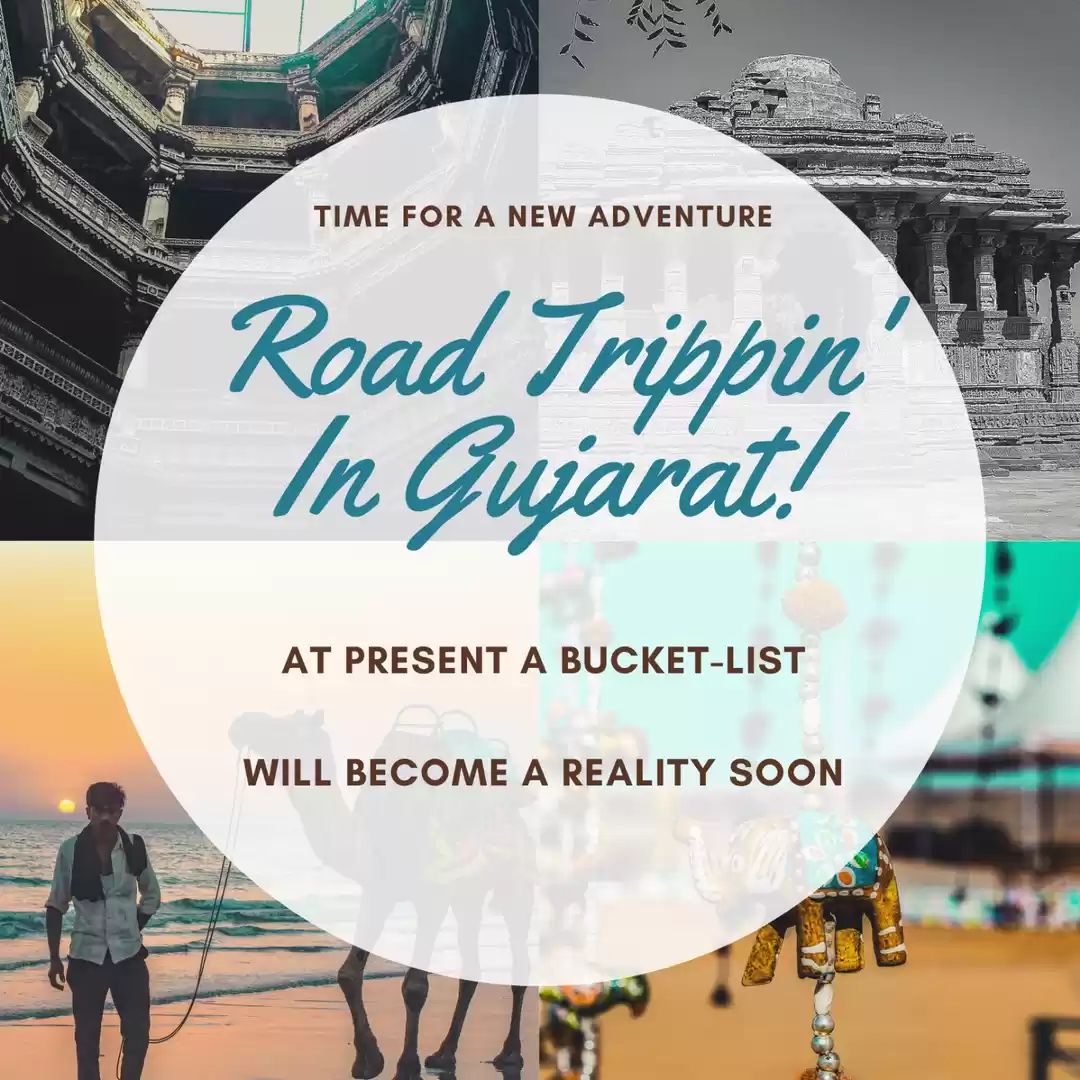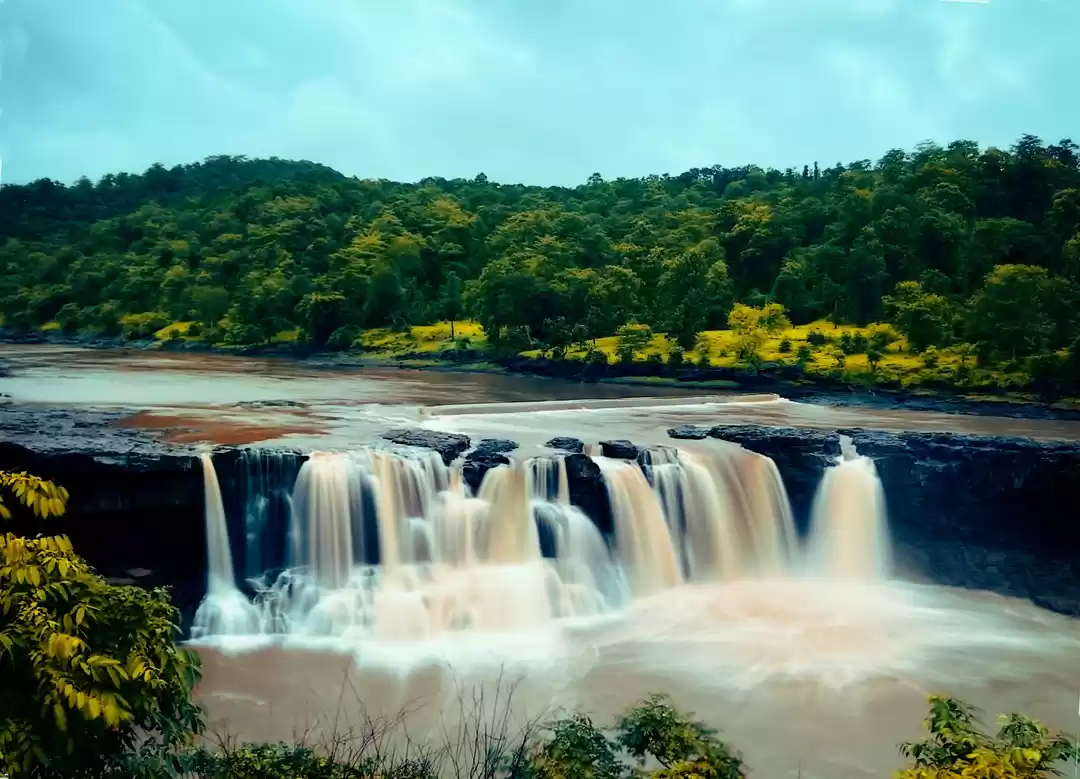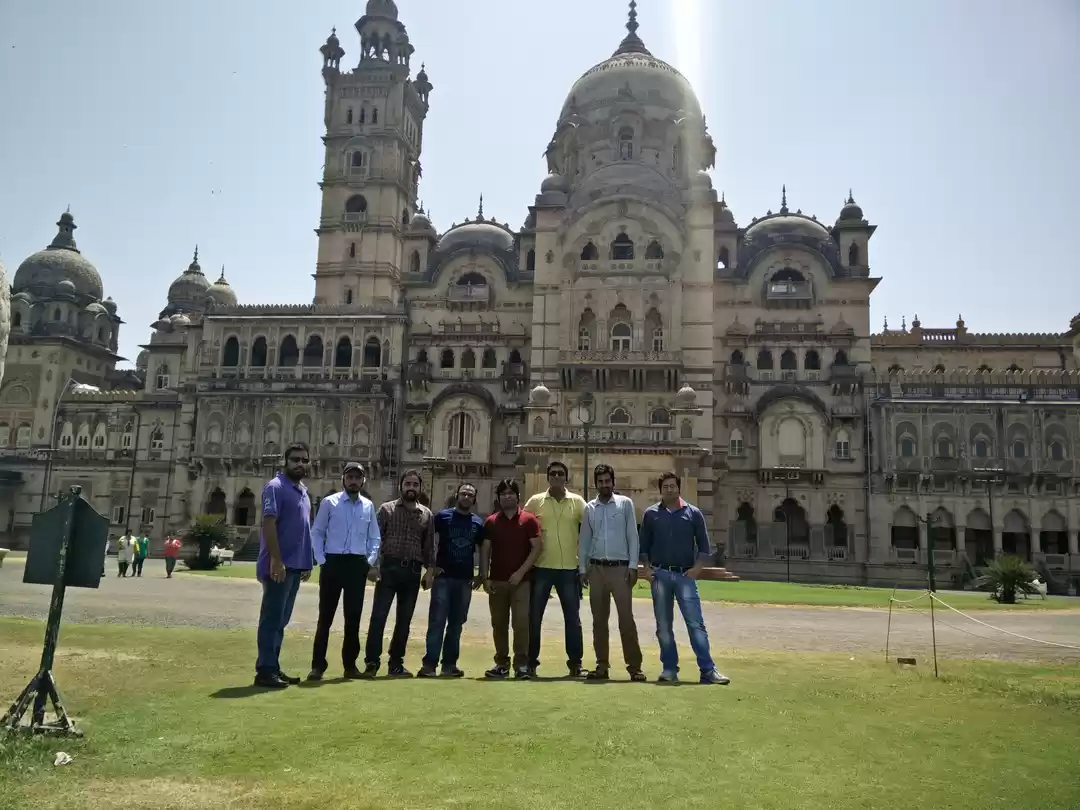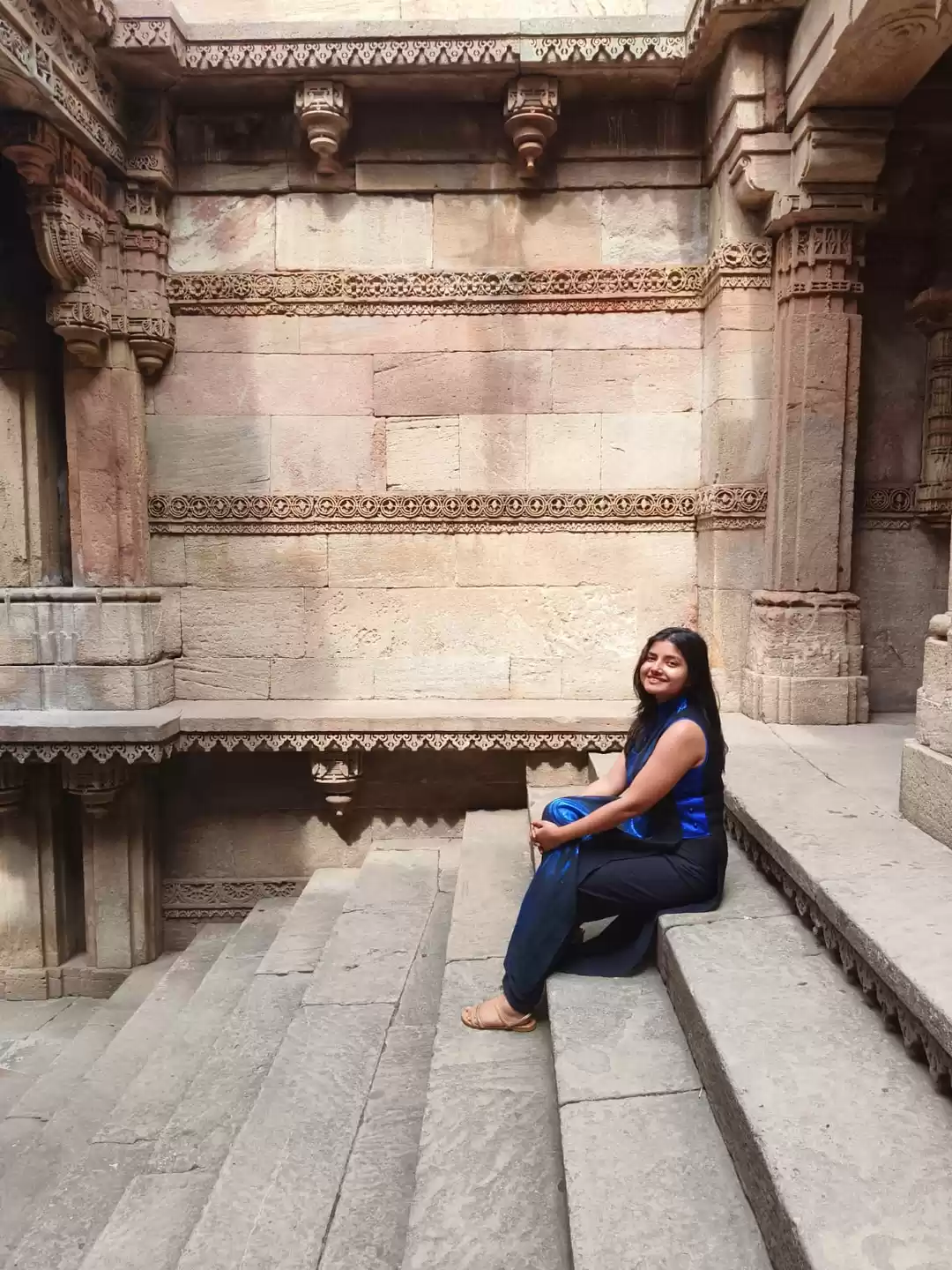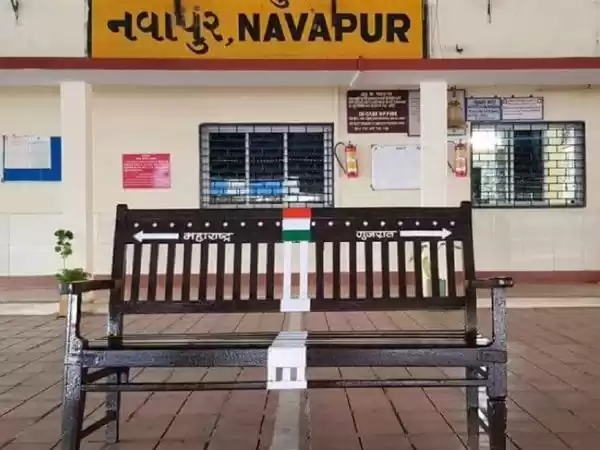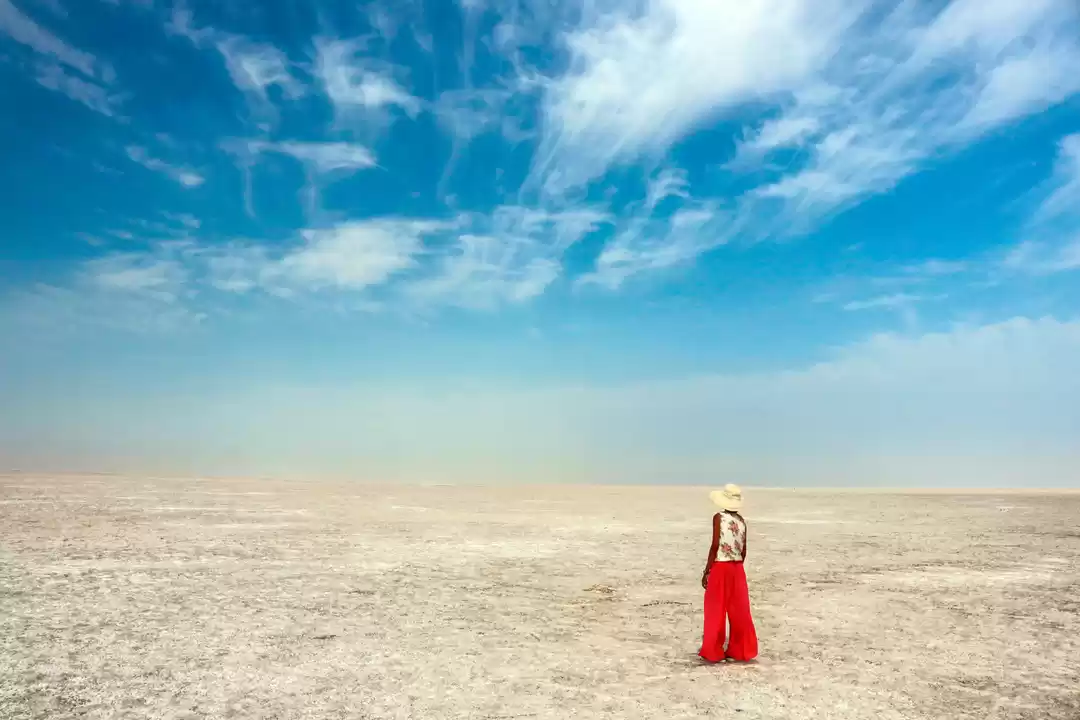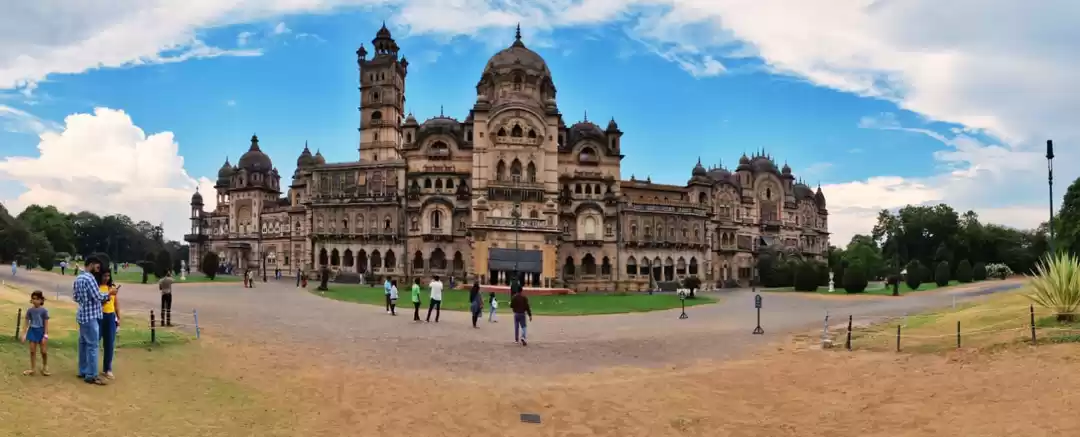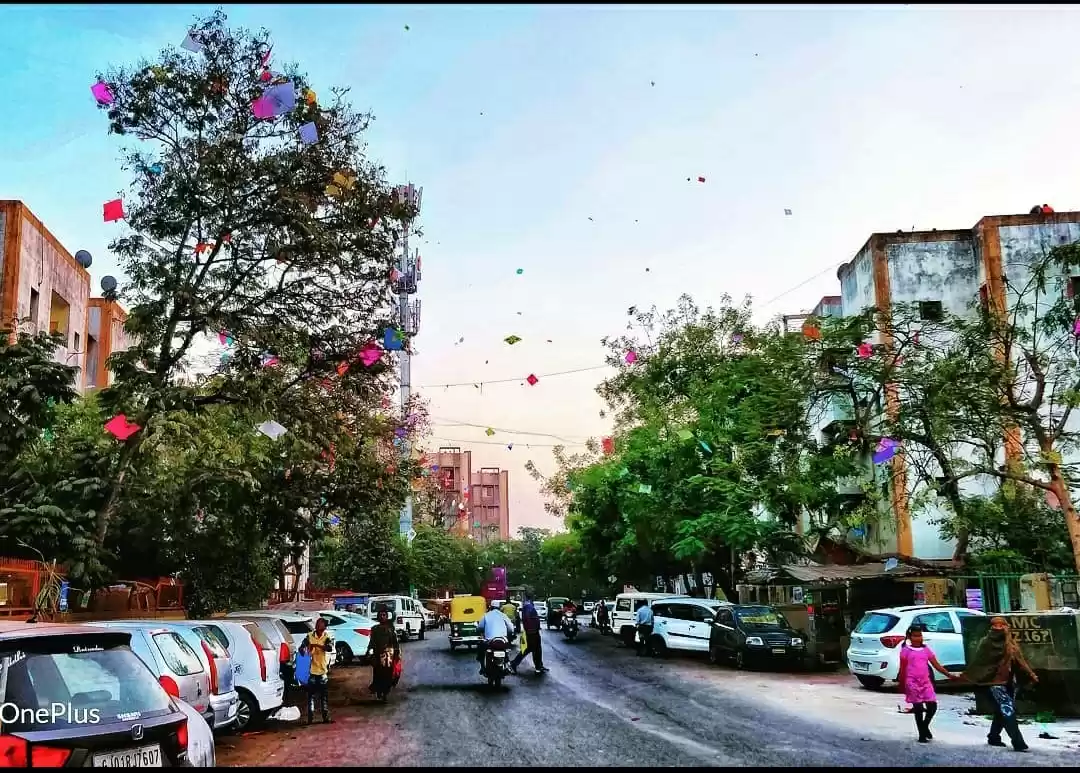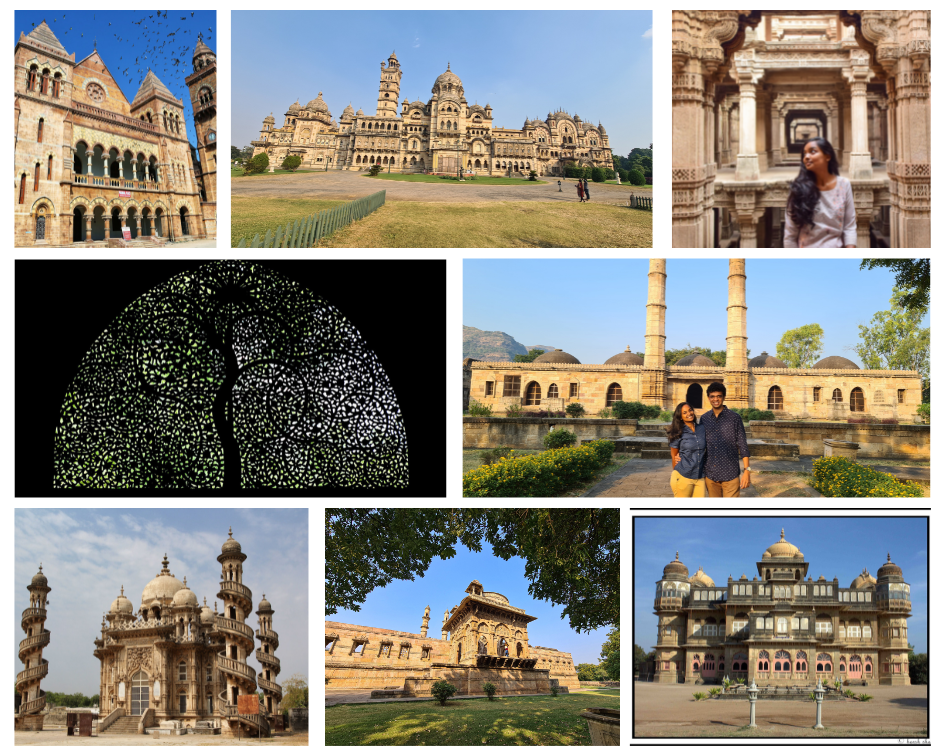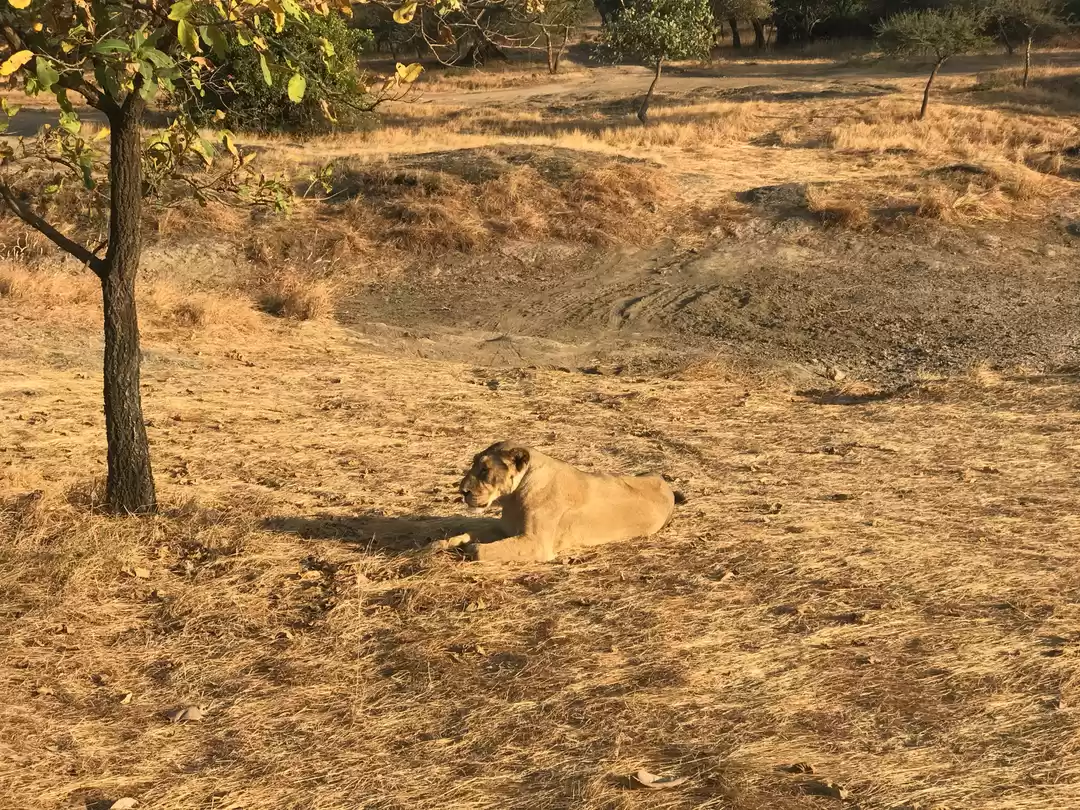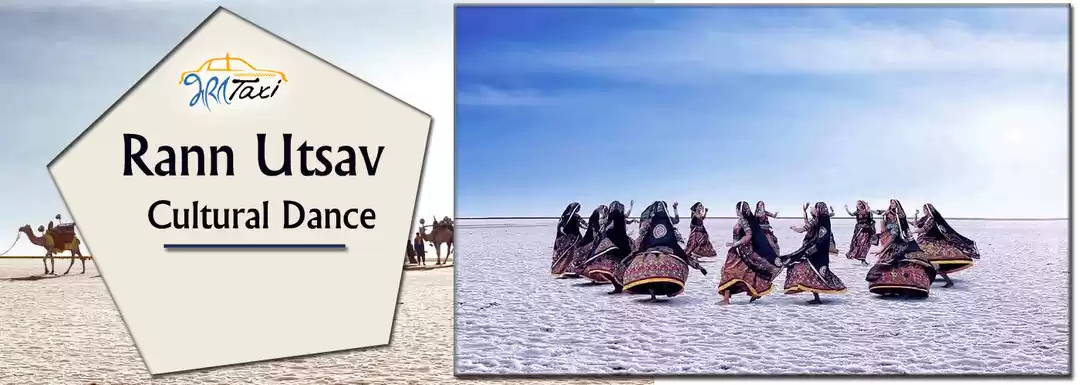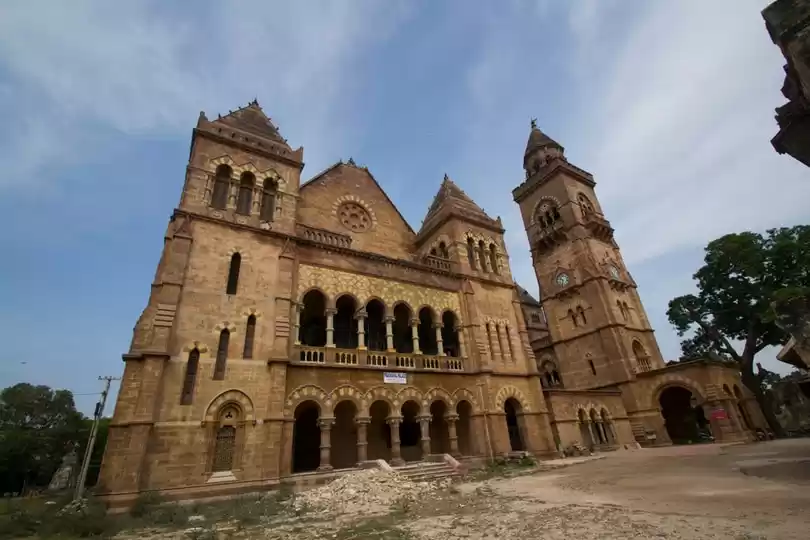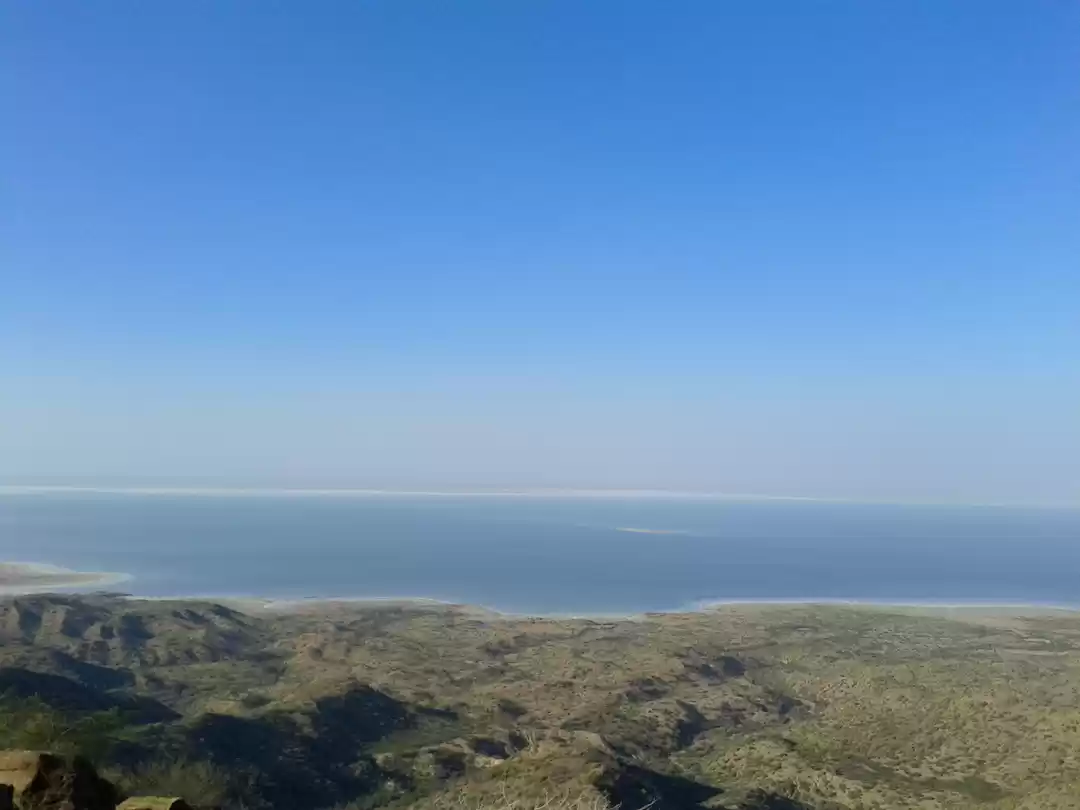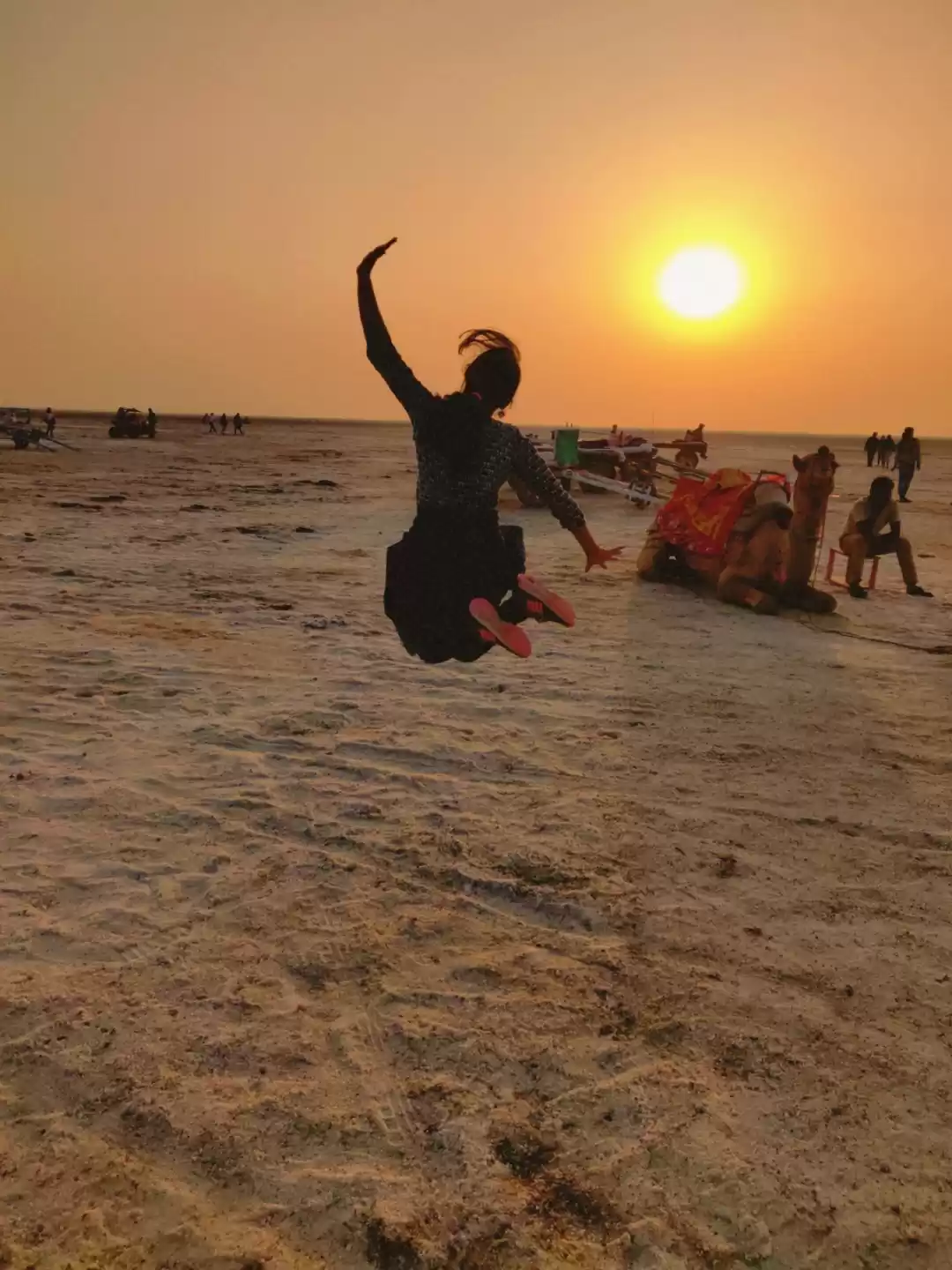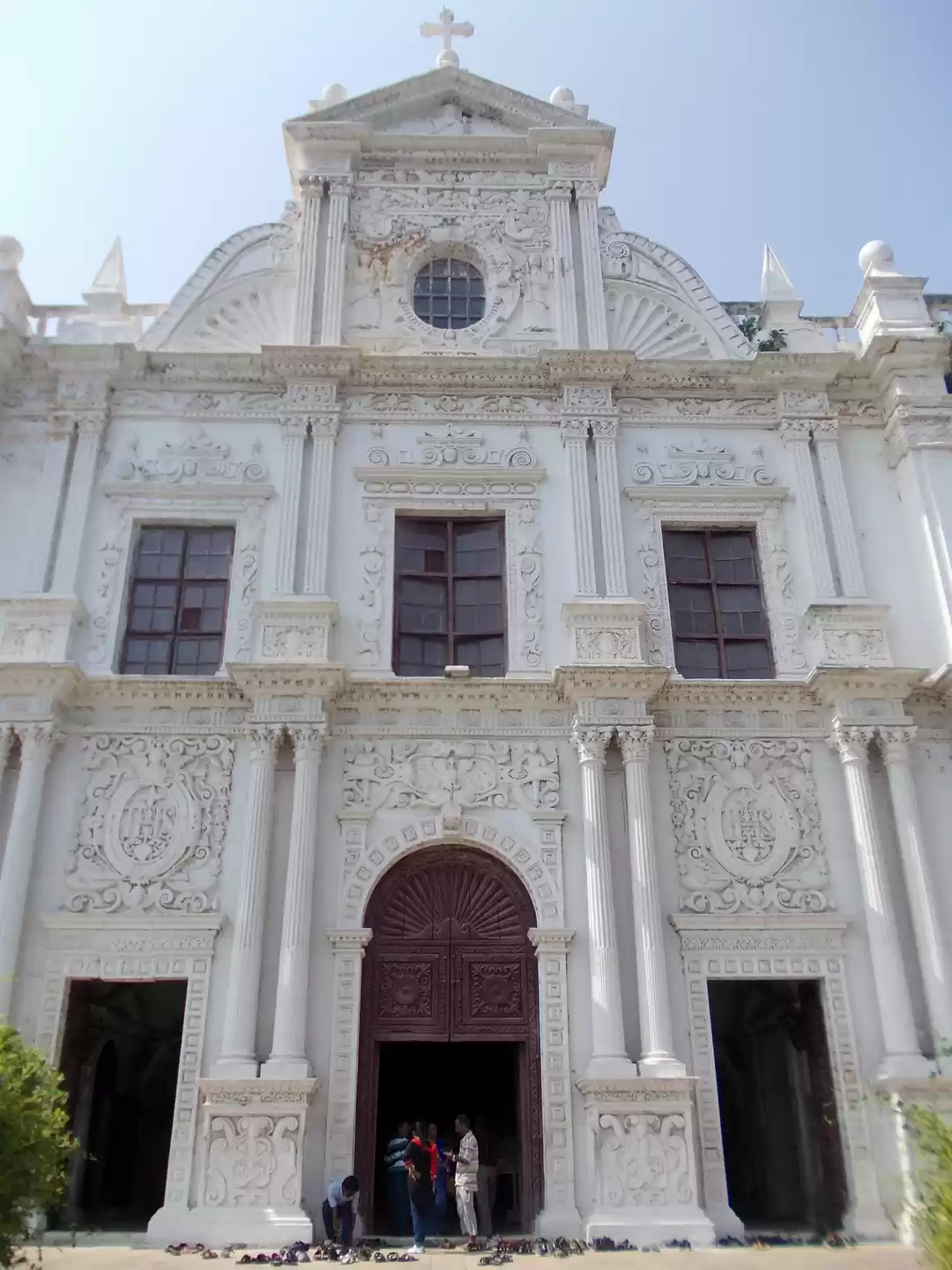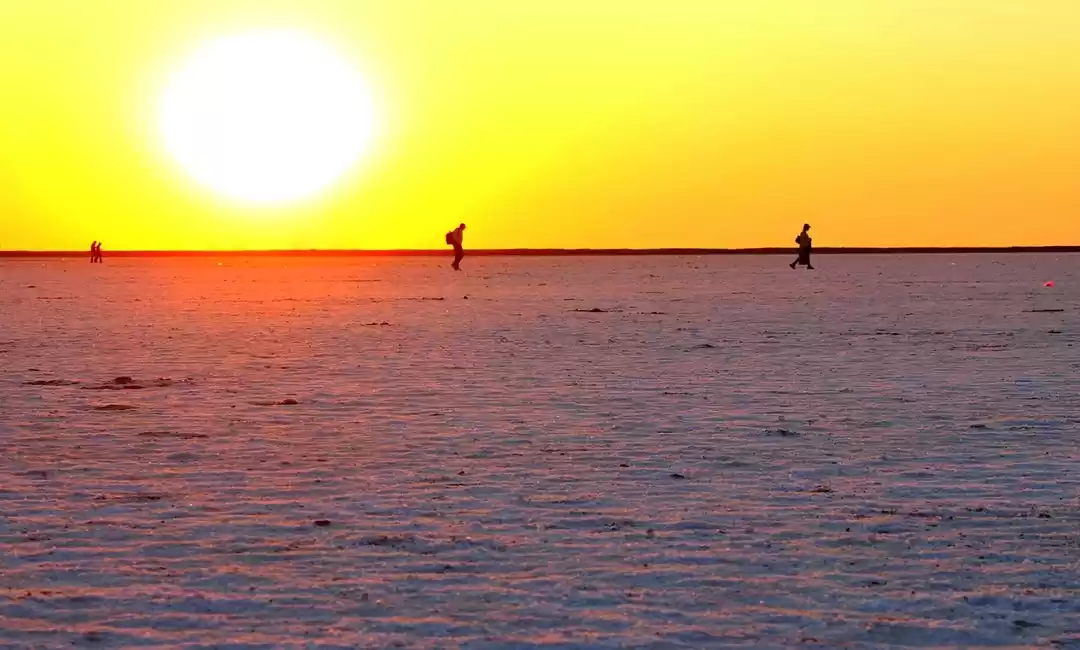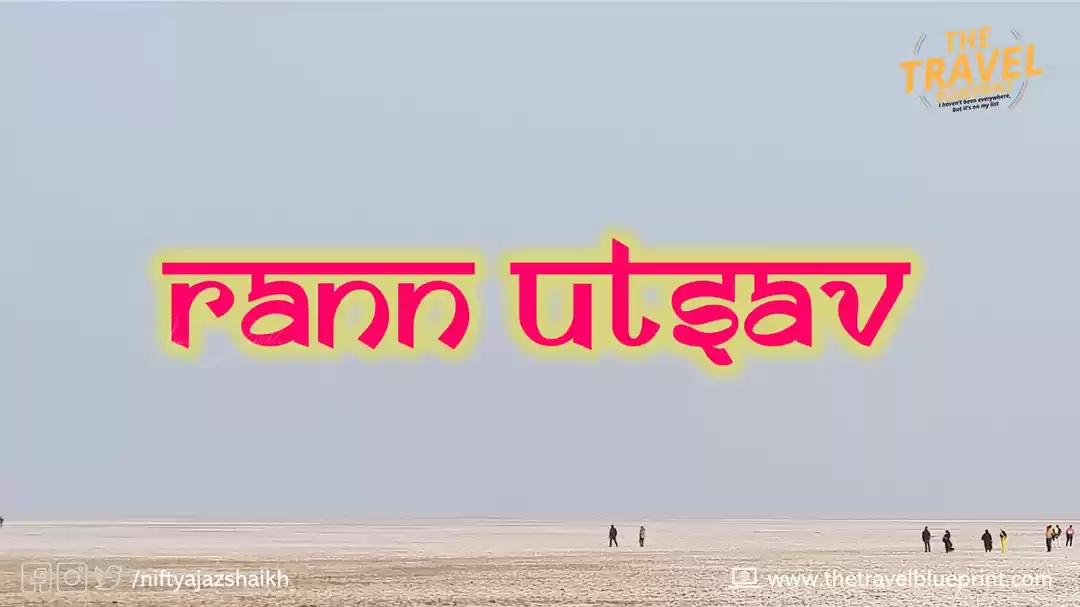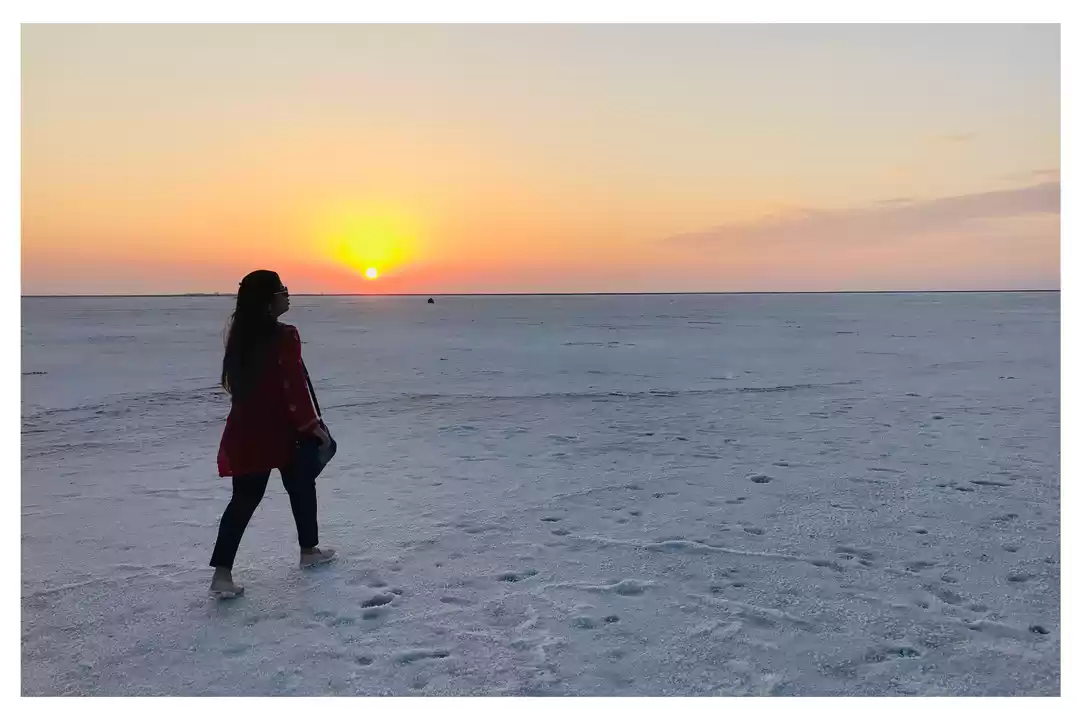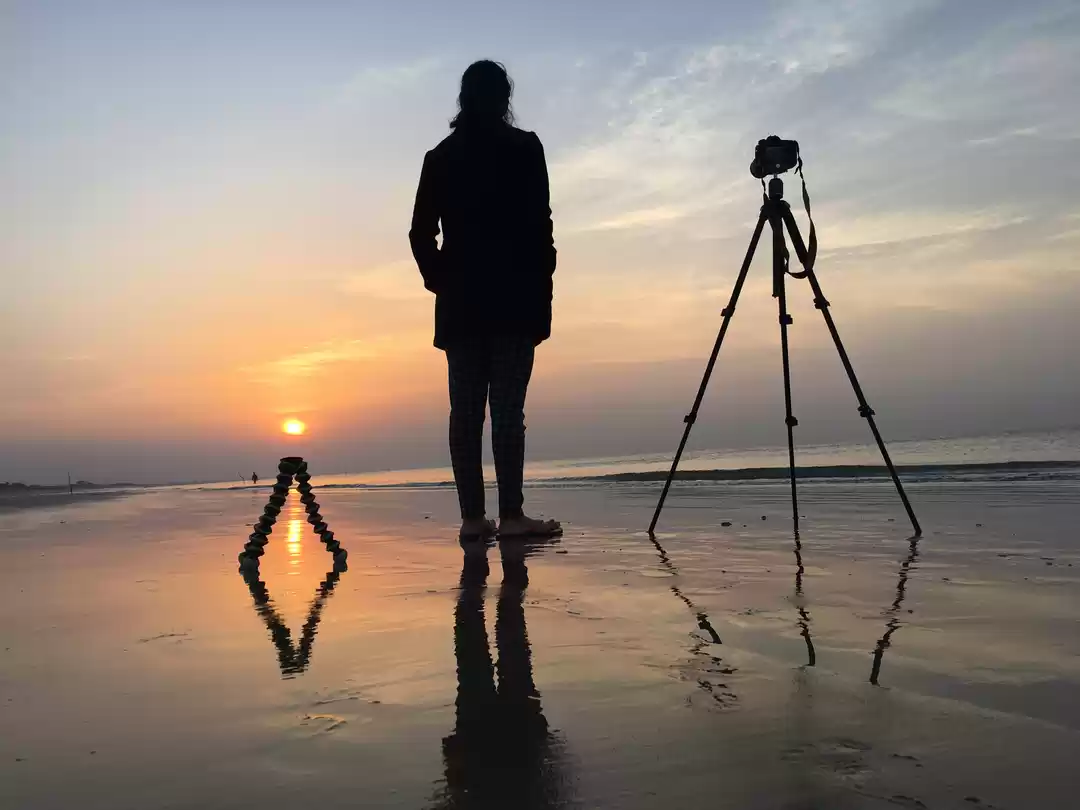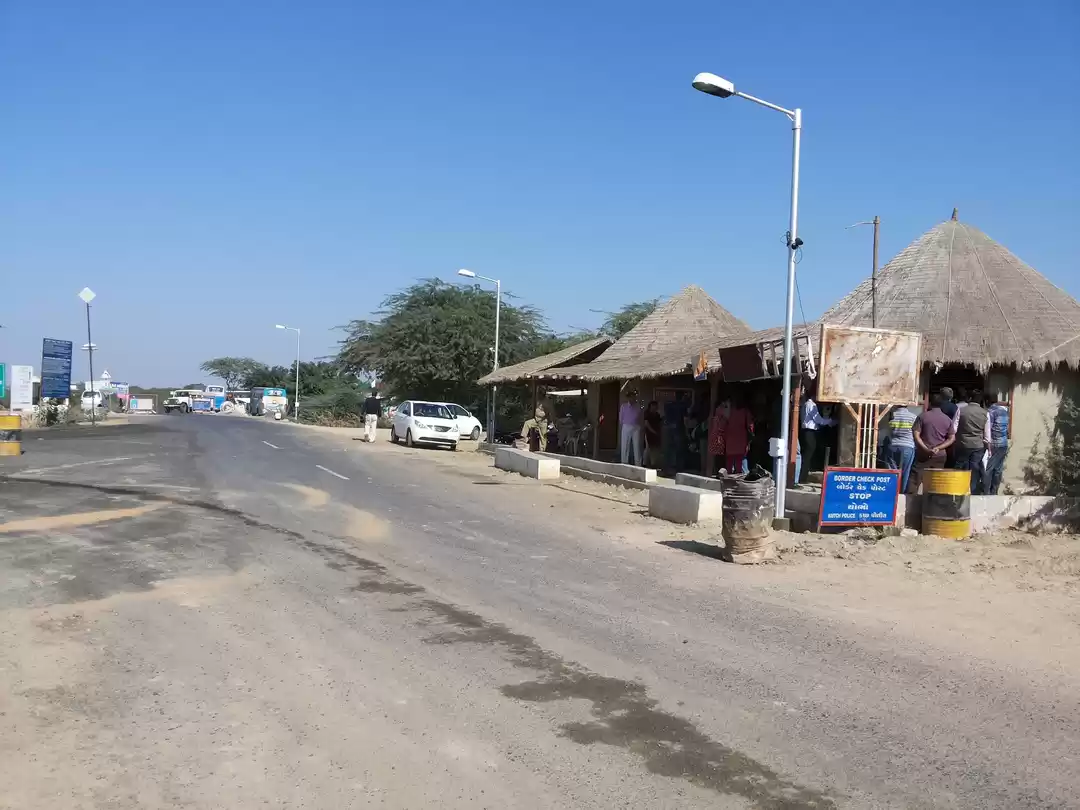

























































































I woke up at 3 am in the morning, gazing up. I looked up at the lamp overhead as it swayed ominously in the brisk cold weather. It was freezing cold. The heater provided little comfort, and I could feel the chill down my spine even with 2 layers of warm wear and 3 layers of blanket. Alas! I miss the warmth of my bed back home. If only I had carried my warm wears I could be sleeping much better, I told myself.
How did I sleep through this ruckus? I thought to myself as the tent flapped against the canvas. I was lucid dreaming, half asleep half-awake, trying to make sense of my surrounding. And then it clicked, Wait. I’m at the Rann Utsav. In Kutch. It’s the end of December. It’s been a day, here, at the Tent City. And then my memories flushed in. I recalled my past few days, quite an adventure I must say, like a rollercoaster ride. I was on an exploratory trip to Gujarat with 19 other companions. We have been travelling for past one week, exploring Gujarat that started off from Ahmedabad and ended in Kutch travelling over 1000 km in a span of 5 days. And, by now I was wide awake, I clutched my blanket tightly, rolling into a tiny ball. I lay awake for hours, in this strange land just beyond the village of Dhordo, watching the desert weather making me feel cold, finally falling asleep just before a very cold sunrise.
Being an avid traveler with a hunger to explore places, I couldn’t have missed an opportunity as fantastic as this one; so as soon as I saw this mail from BTC for a trip to Gujarat that included a firsthand experience of Rann Utsav I knew I had to register and lucky me, I made it to the list. **Glee** **wide smile**
We had quite an adventurous start when a fellow companion missed her train by a mere 2 minutes. She had almost given up any hope of finding an alternative, when she stumbled upon this particular bus leaving to Mumbai. So after weighing her options she decided to take the plunge, and reached Mumbai way before us, to catch our connecting train to Ahmedabad the next night. Meanwhile, back in the train after a convoluted seat allotments, everyone retired to their respective seats eagerly awaiting to reach Mumbai. I had a pretty early morning start around 5’ish and a long day ahead. I was pretty sure it would be a boring one, but things turned out to be different. We had our breakfasts, and assembled in one of the compartments for a round of introduction which went on for a couple of hours, after which we passed our time chit chatting and getting to know each other better. We played UNO for another couple of hours, then dumbcharads, and by the time we were done, we were almost nearing CST. After a quick dinner at one of the restaurants near CST, we made it to Mumbai Central to catch our train to Ahmedabad. By the time the train started moving, we were all cuddled up under our blankets trying to get some sleep before our adventure begins.
AHMEDABAD:
After a quick freshening up and a cup of tea with some Dhokla’s we started our journey towards Junagadh in a 20 seater bus; our first pit stop! We had breakfast from one of the famous joints in Ahmedabad, “Gadiya” that offered the typical Guajarati cuisine which included, Papada, Papadi, Gatiya and hot crispy Jalebi’s. We reached Junagadh around noon covering roughly 300+ km. After checking in at one of the local guest house and dumping our luggages, we made it to a nearby restaurant for our lunch. They served us the authentic Guajarati Thali, that included 3 variety of Sabjis, Ghee Phulkas, Dal Chawal and the desserts included, Gulab Jamun, Aam Ras, Shrikandh and Fruit Custard. By the end of it, I could see a smile of content on everyone’s face.
JUNAGADH:
Junagadh is a beautiful but faded city, with grand Indo-Islamic buildings and bustling streets. Junagadh was the seat of the Nawabs small kingdom, which ended during Partition when he wanted to go into Pakistan and his subjects did not... they won, and the Nawab decamped over the border. Junagadh gives the feel of an ancient city lost in time, which is not by the attire of the people but by the architecture of the old buildings and houses which are very ominous in the town. The uniqueness is very evident from their large arc shape doors and windows. Many of the elders in the town claim that these ancient buildings have their foundation anchored in with pure gold and this has been seen on numerous occasions when these structures were uprooted.
There are plenty of transport options for getting around the town from auto rickshaws to tuk-tuks and the town also has their very own unique vehicle which is a motor bike connected to a cart. This unique vehicle is used to ferry both people as well as other goods including animals to neighboring villages. But the best way of getting around the town of Junagadh is on foot, since the town is not very big and also has plenty of narrow lanes and bi-lanes which can only be accessed by foot and gives one a very good insight into the daily life and culture of the people of Junagadh.
Now, Junagadh is a place with a rich fabric, but seemingly no idea of its worth... We saw only a couple of places while there, and none of the historic monuments are particularly well cared for. Which is a shame... because the people here are amazingly friendly, as in all of Gujarat, and the city’s relics are great fun to explore. I crawled around a tomb complex overgrown with creepers and weeds, picking my way through elaborately carved mausoleums. The grandest building in town is the Mahabat Maqbara, the Nawabs formal mausoleum, with fairytale spiral staircases punctuating the sky. Sadly, it looks abandoned and will probably soon start to decay unless given more care and attention.
At the head of town is Upperkot Fort, a strange place with huge walls, in some places 20 metres high. The centre of the fort is largely overgrown, but in amongst the trees and grass are Jama Masjid, an old mosque, and two baolis - communal wells, built centuries ago and an architectural feature almost unique to Gujarat. The fort is ideal for aimless wanderings along its walls, which provide great views of what would be my next destination - Girnar Hill.
Girnar Hill is a 600 metres high mountain, on which have been built a series of temple complexes. The earliest, Jain temples set about two thirds of the way up, were built as far back as the 12th century. Thankfully, a series of steps were built to reach the temples in the 1900s... but unthankfully there are 10,000 of them! Since we dint have the luxury of time, we had to just turn around from the base and bid goodbye.
GIR NATIONAL PARK:
The next day after an early checkout we made our way to Gir National Park. We had booked an 8.30 slot and while we waited for our turn to come up we did manage to do a quick shopping at the stalls for some camouflaged vests and caps.
Imagine this, you enter a protected area in search of the Lion. The forest is dry and brown. The drive in the open Jeep is dusty. We soon get used to seeing several tourist vehicles in search of the lions. The pugmarks on the forest roads, the alarm calls, the excitement to spot a lion, but no sighting yet. Your eyes are keenly searching for any movement or sounds that would indicate the presence of this mighty beast. Various scenes you had seen on television keep popping up in your mind as your eyes scan the dry landscape. You spot deers, peacocks, and a variety of other birds but still no sign of lions. We learnt of the Maldharis and their cattle. We understood that the dry scrubland with hills, perennial rivers, and teak forest was quite ideal for the lions to roam freely. We saw plenty of "Spotted Deer", "Sambar Deer" and “Wild Boars”. We even spotted Scholar Scop Owl, White Eye Buzzard, Yellow-footed green Pigeon and Mars crocodile but still no sign of Lion.
After a lot of effort of going this way and that, we suddenly saw him … stop, STOP! .. my goodness a lion! He was walking near a stream far away from us. We couldn’t get a clear shot. I wanted to jump off my jeep to just get a closer look. Alas! He went behind the bushes. We could just get a glimpse of him. I wanted to see him again. We decided to wait. To give him some time to get out of the bush and probably take a stroll. Everyone were quite, their eyes pinned on the bush, waiting for even the slightest movement. I was amazed at how the color of the animal merged with the background. If I was not fully tuned and he was not moving, I am sure I would have missed seeing him! I was delighted at this first, lucky sighting. I just managed to shoot one image of the back of the vanishing lion! My first sighting to cherish! As I savored this exciting first sighting, the best is yet to come, I thought. Soon it was time to head back. The time allowed for our morning session was almost over, and then suddenly, he comes out of the bush, walking without breaking his stride! He was walking right towards us, glancing at us every ones in a while. He moved past our jeep and for a moment I froze wondering what would happen if he pounces on us. But lucky me nothing of this sort happened and I stood there dumbstruck, gleaming at the massive, powerful, wild being in front of me. He then gave me a wonderful look before jumping across the road and vanishing into the forest. It all happened so quickly, just about a minute I would say and what a minute – phew! I am still wondering how I managed to shoot a couple of images in all that excitement!
After our safari, we resumed our journey to Somnath, to visit the Somnath Jyotirlinga temple, one of most important Lord Shiva temple. The history of this temple is a true proof of the Glory of India in past. The Somnath temple is the first among the 12 holy shrines which are mentioned in the ancient sacred Hindu scriptures. Located on the shore of the Arabian Sea, it is one of the busiest pilgrimage destinations in Gujarat attracting a large number of devotees every day. Mobile phones, cameras, anything made of leather (wallet, belts etc.), half pants are not allowed inside the temple. Even photography is prohibited, so beware.
Our last pit stop for the day was Dwarka, where we spent our night. It was already late so we couldn’t visit Porbandar, but we did make a stop at one of the beaches on the way to enjoy the sunset. Some of us got our feet’s wet and others enjoyed the sunset in solitude. By the time we reached Dwarka it was mid night and within seconds I was deep in sleep.
DWARKA:
After a quick breakfast we made it to the Okha, a small coastal town, you can see fishing village, colonies on route, the dead dried fishy smell welcomes you in this Naval town. Beyt Dwarka is located on an island; local boats do ferries between Okha port and Beyt Dwarka. We boarded one such boat. Tickets were cheap, 10 Rs/person. We reached the other side of sea, visited the place, "Beyt Dwarka temple" and returned Okha by noon.
We also visited “Rukmani Mandir”, “Nageshwar Mahadev” (a dwadash Jyotirlinga), and “Gopi Talav”. One legend for Gopi Talav (pond) says, Gopikas were unable to live away from Krishna, offered their lives to the soil of this pond, merged into the soil and turned into yellow clay, known as Gopi Chandan. The soil of the Gopi talav is smooth and yellow in color. It can be bought outside the Talav(pond). The pond is behind the temple. Anyways, the temple has a nice ancient look to it. With banyan trees around, and a whitish mossish colour, it has a nice mystique look. For Rukmani temple the legend was narrated by the main priest, it says, once Lord Krishna and his wife Rukmini went to invite Durvasha rishi (sage) at Dwarka. Rishi agreed but on a condition that, if Krishna and Rukmini pull the chariot, later while pulling his chariot, thirsty Rukmini drank water without offering it to Durvasha. So the insulted Rishi cursed Rukmini that she would be separated from her beloved husband. Hence Rukmini temple is located few kms away from main Dwarka mandir. Nageshawar is located on the way between Dwarka and Beyt Dwarka. It is one of the twelve swayambhu (self-existent) jyothirlingas. The 25 meters high Shiva statue in the temple premises can be seen far from the road side.
The main Dwarkadheesh temple was our last pit stop. It’s a very small town, so the lanes are narrower, similar to any other holy Hindu town in India. A walk takes you back in past. Camera, cell phones were not allowed. We then entered the Temple through a long queue passing a security check. The hall looked like a human sea, worshipers standing on their toes to get "darshan" of their beloved “Madhav Murli Manohar”. Loud chants of “Krishna the Mahayogi” were easing out the long waits for doors to open and curtains to fall while it was becoming difficult to stand in that human pool. We had a quick darshan and then came out of temple.
Later on we decided to sit along the sea shore watching sunset. It was quite peaceful and mesmerizing.
After a daylong of temple visit, our next stop was Bhuj. We were travelling by bus overnight.
BHUJ:
The journey to Bhuj was quite tiresome especially for me. I am more of a train person than a bus and most of my overnight bus journeys ends with sore body, sleep deprivation and motion sickness, and this is exactly what happened to me! By morning I was almost vomiting, I had a bad body pain and my head was spinning, needless to say about my sleep. But this dint dampen my spirit, I took a tablet and was fine in no time. After freshening up, we had our breakfast and hit the first place on our list; Aina mahal & Prag Mahal.
Both buildings have withstood massive amounts of damage from the many earthquakes that have rocked the natural-disaster prone area over the past few hundred years. Shattered glass, foundation to roof cracks, and large chunks missing from both buildings give a strange introduction to what used to be the prized buildings in town. Rubble lay strewn across the property of both relatively new palaces and the entire top storey of Aina is missing due to the impact from the 2001 quake. From the outside, Aina looked like a pile of rubble; once you get inside of what remains, there is another pile only this time it is a compilation of a strange brew of personal effects all with a European flavor to them…unusual, very intriguing and well worth the 10 Rupee admission price.
Prag Mahal Palace is a much bigger palace in terms of grandeur and boasts of the second highest clock tower in western India. At the Prag Mahal you’re allowed to climb up right to the top of the 45 mts high tower via a dangerously ascending spiral staircase and observe Bhuj like an eagle would. The 5 massive bells in the clock tower weigh a total of 700 kgs! The 5-floor structure was completed in 1875 under the rule of Pragmalji and designed by a British engineer Cornel Wilkins which explains the almost European look and feel of the palace. Although some parts of the palace are shut for repairs, once you step inside one of the many halls of the palace like the Durbar Hall or the Divankhand, you marvel at the extent of pomp and show that our maharajas enjoyed. Straight out of the movies!
Prag Mahal takes weirdness to another level. For starters, the building was crowded with tourists and school kids jostling around. Second, the building was not only wracked by several quakes over the years, but, in addition, its upkeep leaves much to be desired with bird shit and feathers scattered about. Third, the freakshow who ruled from this palace either hated animals or just loved killing them because just about every single reptile and mammal species is represented in its taxidermied form, adorning the walls and furniture in the main and lesser halls. Fourth, not only was the entire place coated in dead animals, but each stuffed animal was either decaying off its mount or had been severely picked at by the birds rendering each one a ghastly representation of the animal it was meant to portray. These four factors combined with broken chandeliers, cracked walls, broken glass, and weird guy roaming around gave the place a very supernatural feel; this place is not to be missed if you happen to find yourself in Bhuj!
Aina Mahal appears a devastated edifice ruin from the outside courtesy the 2001 Gujarat Earthquake although even nature’s fury could not take away the sheen of it’s fabulous interiors, especially the magnificent ‘Hall of Mirrors’ which is adorned with mirrors and precious stones because of which it got its name, ‘Aina Mahal’. Another room in the middle of the palace has several hanging, tinted glass candle holders, and a platform in the center. The platform is surrounded on its sides by a channel which can be filled with water. I’m told by the caretakers that the water served two purposes. It cooled the room during the hot and dry Kutch summers. Besides this, it also reflected multi-coloured light from the hanging candles, creating a magnificient ambience while Maharao Lakhpatji drew on his hookah and was entertained by Kutchi music and dancing girls. With exquisite chandeliers and mirror-work juxtaposed against a golden ceiling and walls, the Aina Mahal was built in 1752 during the reign of Lakhpatji of the Jadeja dynasty and designed by Ramsinh Malam who had trained in Europe as an artisan for over 17 years.
The Fuvara Mahal is another gem that was used by the Maharaja as a music room and decorated by Belgian chandeliers. The 47 feet long Nagpanchami Ashwari Scroll depicting a state procession of Maharaja Pragmehal provides for an accurate illustration for the layman on what it was like to be a Maharaja in the times gone by!
Once we were back from Prag Mahal and Aina Mahal we took a break from the sun to freshen up and feed ourselves before starting our next round of exploration.
Our first stop after lunch was Hamirsar Lake which was kinda okay’ish. We sat for a while near the lake enjoy the peacefulness after which we made our way towards Cenotaphs Complex. These tombs were ruined during earthquake and now it’s just a rubble structure, but definitely scores in photography.
Our final stop for the day was Bhuj Mandir also known as the Swaminarayan Temple. This temple suffered immense damage during the massive 2001 Gujarat earthquake. But from its debris, followers of the Swaminarayan Sampraday built a brand new temple that stands bathed in pure white marble and gold and is a delight to behold. The stunning whiteness of the marbles with intricate carvings inspired by episodes of Ramayana and Mahabharata will never cease to amaze you no matter how many times you look at it. The environment of the temple, unlike many other famous ones, is neat and clean and the best part is that nobody bothers you while you’re engrossed devouring the beauty of this place.
KUTCH:
This is it! The main purpose of visiting Gujarat has finally arrived! KUTCH!!! We had made our reservations for the entire tour of Kutch with the 1 Night/2 days package that included stay at tent city, transport to and fro from Bhuj, camel cart ride/bus ride to the white desert & sightseeing in Bhuj and food.
For those interested in natural history, Kutch is the habitat of the endangered and interesting wildlife species like the Indian wild ass. This district has wide reputation as a paradise for birdwatchers too. Being one of the most ecologically and ethnically diverse district of the state, Kutch is a celebratory land of art, crafts, music, dance, people and nature. In such destination, celebrations taking place during the full moon night of the winters amid the awe-inspiring and contrasting landscape make the extravaganza unforgettable experience.
Every year, the Rann Utsav engulfs the lustrous white desert of Dhordo at Kutch with festive extravaganza and vibrancy. Organized by Tourism Corporation of Gujarat, the festival is a melting pot of cultures, sights and sounds, which reflects the distinct spirit of Gujarat. The Rann Utsav is like a never-ending journey which is celebrated for ninety days during the full moon nights of winter months. Apart from featuring the cultural grandiose of Gujarat, Rann Utsav gives a unique chance to witness the breathtaking beauty of the land. From viridescent grasslands to pristine beaches and vast desert, the festival offers access to Gujarat’s diverse topography.
The road from Bhuj to Dhordo is an unwavering poker straight, albeit bumpy path. We reached there by noon. Arriving into the Rann Utsav tent city, I was once again thrilled to find the surprisingly decent aesthetic quality of the tents, arranged in tiny clusters basis categories, king sized beds, moroccan lanterns, coffee and tea with a kettle, air conditioning, a seating area, and lovely safari-esque attached bathrooms. With a couple of dining areas, little displays all around about the various attractions of Gujarat, several activities, this tented city was clearly a holiday destination for the Indian tourist. Myriad hues, plethora of colors, vibrant culture, cornucopia of music and dance, all together in Kutch creates a medley of exquisite experiences giving this desert land its identity and spirit of the region.
After dumping our luggage’s we made it to one of those magnificent dining halls for an early lunch after which we decided to explore the tent city in cycle. We were waiting for our evening safari of White Desert. So when sunset rolled around, we rushed to the entrance to grab a spot on the camel cart that would take us into the White Desert.
Since it was a full moon day, they had arranged for a night safari at 10 as-well. Imagine a breathtaking canvas of spotless white unrolling before you. Stark, sometimes flat, sometimes undulated, glowing a pristine white under an ageless moon. Rann of Kutch, Asia’s largest salt desert, is just that – a visual treat that will dazzle you with its brilliance. Enveloped in deep surreal silence, this stretch of salt marsh, desolate and austere, stirs your imagination…And lures you deeper and wider into its mysterious charisma. Venture into the indefiniteness of the Kutch under a full moon, and come back with the feeling that you have finally cracked the code of ethereal beauty.
The next day we vacated our tents and with heavy hearts and bid good bye to Kutch and retraced our steps back to Bhuj.
From Bhuj we were taken to an artisan village located about 8kms from Bhuj called Bhujodi. Bhujodi is a major centre for textile handicraft and over here you will get to meet the real artisans – weavers, block-printers, tie & dye artists – who are behind the famed Kutchi handicraft. There are many shops around here where you can let your eyes prowl upon some really original and impressive handicraft; be it the beautiful shawls with extremely delicate embroidery or some really neat book cases or even chapatti rollers with minute wooden carvings. Frankly it’s all worth it and one really feels like letting it go had it not been the stubborn wallet that just refuses to budge.
After this we ventured to Vaniya Wadi which is the shopping location of Bhuj. It is famous for Bandani materials. We shopped for couple of hours and then made it to Mandavi. Located 60 kms from Bhuj, Mandvi’s main attractions are the picturesque Mandvi beach and Vijay Vilas Palace, the summer retreat of the Kutch Royals. Once the region’s leading port of entry, Mandvi also boasts of a 400 year old ship building industry that manufactures small ships even to this day. The Vijay Vilas Palace is now the permanent residence of the royal family of Kutch after the 2001 earthquake wrecked the Prag Mahal at Bhuj.
I could go on and on jotting down my memoirs of Gujarat and yet I would fall short on words to describe the experience. It is difficult to comprehend what it means without experiencing it!
Visit Mahabat Maqbara, Upperkot Fort and if time permits trek Girnar. Also do visit Gir National Park which is roughly 50 odd km from this place.
This place is mostly temples. So visit this place only if you do not mind visiting temples the whole day.Rukmani Mandir, Nageshwar Mahadev (a dwadash Jyotirlinga), Gopi Talav, Beyt Dwarka & Dwarkadheesh Temple.
Prag mahal, Aina Mahal, Swaminarayan Temple, Hamisar lake, Cenotaphs Complex are the places to visit.
A must visit place especially during Rann of Kutch Utsav. Enjoy walking on the white desert, the culture of Kutch and the beauty of Tent City. One can shop for authentic craftswork and other items here at Hodka. try visiting this place during the full moon day to enjoy the safari in white desert twice.
Enjoy the beach of Mandavi and visit Vijay Vilas Palace.
Visit the Somnath Jyotirlinga temple.
An artisan village located 8km from Bhuj. This is a major center for textile handicraft and over here you will get to meet the real artisans – weavers, block-printers, tie & dye artists – who are behind the famed Kutchi handicraft.

